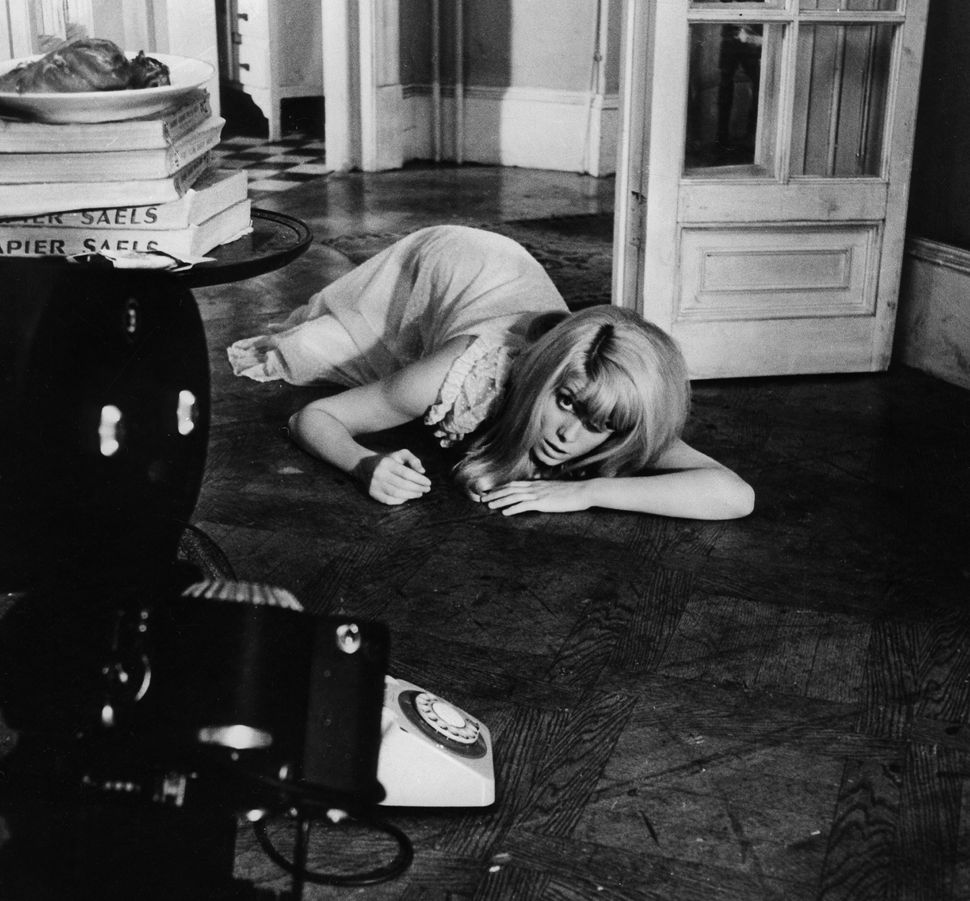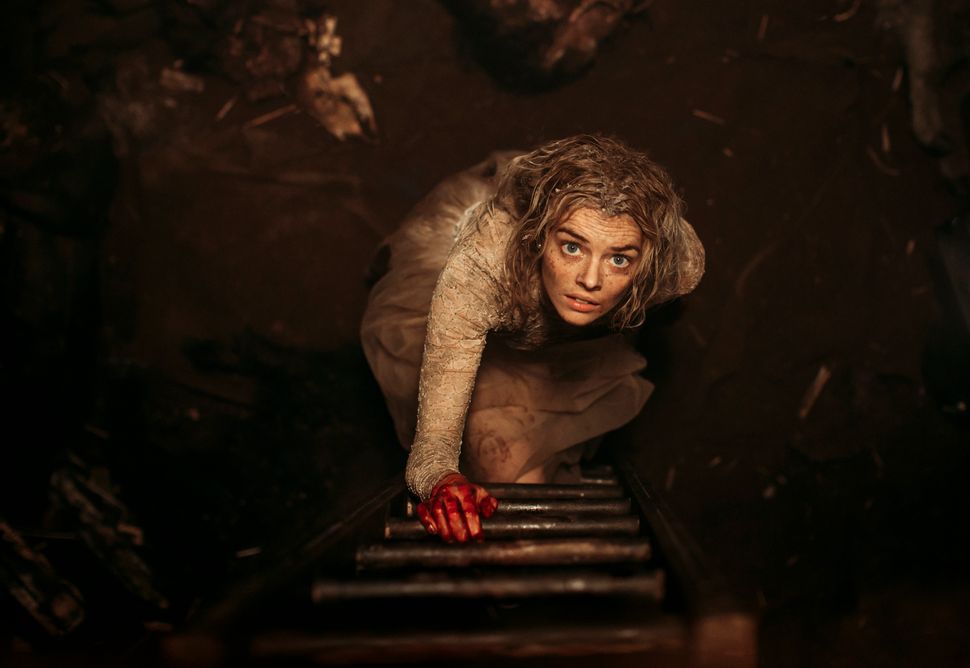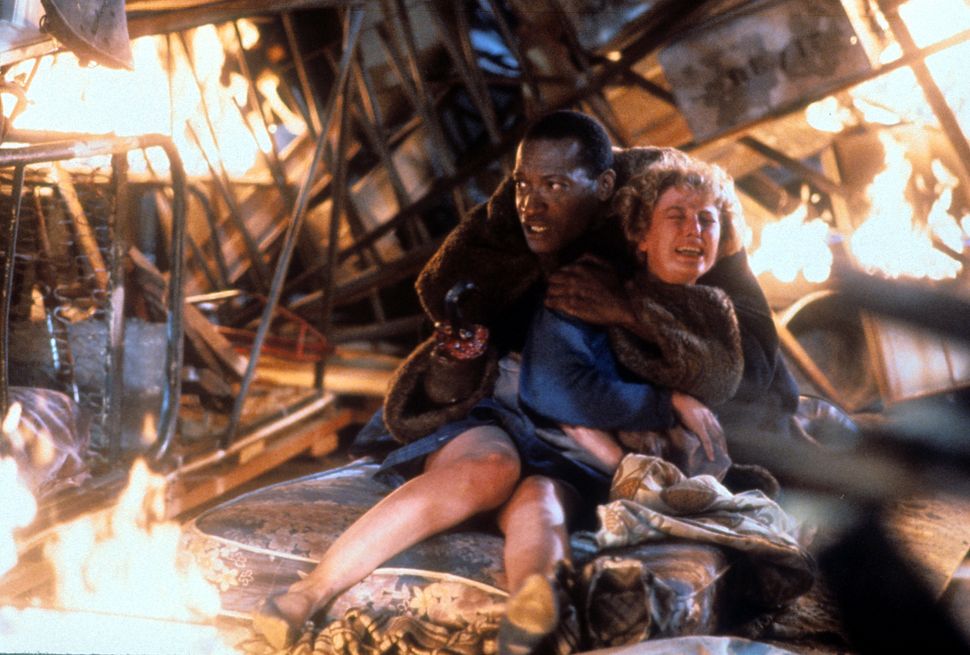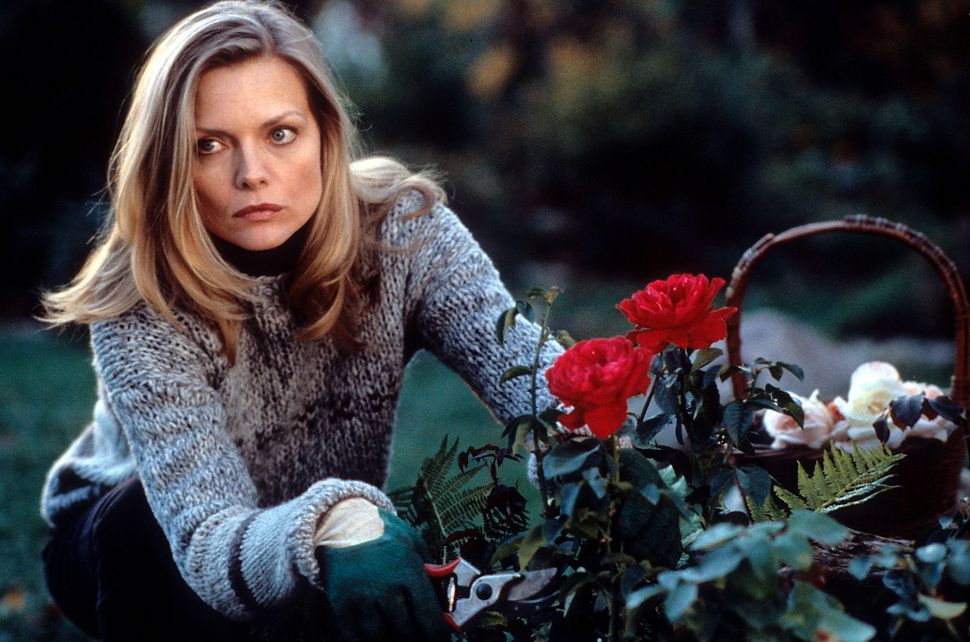Horror movies should be a year-round affair, but maybe you’re looking for a spine-tingling good time now that Halloween is upon us. I’ve compiled a handful of recommendations, divided up according to 10 different interests. Each category features three endorsements, and all of these titles are available on various video-on-demand platforms and/or streaming services. Let’s get spooky.
Women Dealing With The Terror Of Being Alive
Maybe so many horror movies feature female protagonists because the men who run Hollywood enjoy seeing women suffer. It’s a complicated dynamic: Women in horror — or sometimes just one woman, mythologized as the “final girl” — often emerge triumphant despite being ravaged. On the one hand, that’s empowering. On the other, it denies the character her right to any pleasure beyond the mere fact that she still has a pulse. And yet many of these women (Laurie Strode in “Halloween,” Ellen Ripley in “Alien,” Sidney Prescott in “Scream”) are entirely worthy of their cultural canonization, in part because they are avatars for an audience that has shared their fear while absorbing the film.
For the purposes of this list, I’m interested in women confronting everyday horror, no matter the form it takes. (“Halloween” is one of my favorite movies, but the fact that Michael Myers has some sort of supernatural unkillability doesn’t exactly qualify as “everyday.”) Ordinary life is scary enough. At its best, high-concept horror — featuring ghosts, zombies and the like — is a metaphor (sometimes unwittingly) for grief and racism. Blending horror tropes with quotidian observations about the human condition? That’s the sweet spot.
“Repulsion” (1965)
Roman Polanski, disgraced as he may be, made a few resolutely feminist horror classics, the most famous of which is “Rosemary’s Baby.” Before that came the surreal head trip “Repulsion,” with Catherine Deneuve playing an isolated London manicurist haunted by the abuse she may or may not have suffered.
“Audition” (1999)
This Japanese slow burn appears on many lists of the scariest movies ever made, largely because of its final 20 minutes, in which a grifter (Eihi Shiina) enacts a gnarly torture scheme after seducing a middle-aged man (Ryo Ishibashi) armed with a sexist list of qualifications for his next bride.
“Relic” (2020)
The text: a haunted house. The subtext: mothers and daughters, aging, death. Natalie Erika James’ directorial debut finds Emily Mortimer returning home to care for her mother (Robyn Nevin), who has dementia. There, the walls start to shift and things go bump in the night. It’s ravishing.

For The Love Of The Game
Plots involving protagonists weathering simulations that strip away individual control weren’t born in the 21st century (see: “Cube” and “The Game”), but the concept has grown in popularity since the Sept. 11 terror attacks demonstrated how uncontrollable modern life can be. “Saw” and its many sequels are the most notorious examples, with “Cry Wolf,” “Would You Rather,” “Circle,” “Ouija,” “Truth or Dare” and “Escape Room” picking up Jigsaw’s sneering torch.
I prefer my games to be a bit more tongue-in-cheek than “Saw,” a movie that helped spawn the apt term “torture porn.”
“House on Haunted Hill” (1959)
This paranormal forerunner offered just enough camp to give horror its waggish wings. A silvery millionaire (Vincent Price, a legend of the genre) invites five guests to a slumber party at a spooky mansion. If they survive the night, they’ll walk away with $10,000 each. When the movie opened, some theaters rigged a plastic skeleton that would soar into the audience during a major jump scare. You can see the influence of this film on “Psycho,” “The Haunting” and that one muder-mystery episode of “The Golden Girls.”
“Funny Games” (1997 or 2007)
Director Michael Haneke loved this conceit so much he did it twice. Both editions of “Funny Games” — 1997’s takes place in Austria and 2007’s in America — feature two young men wearing preppy white polos who torment a vacationing family. These films can be punishing for anyone who resents flagrant misery, but Haneke exchanges gore for a chilly wryness. He knows audiences adore violence, and he knows that that adoration is sort of sick. So he taunts us with it, at times mocking the viewer for embracing something so sadistic.
“Ready or Not” (2019)
Here’s the most fun horror gem of the 2010s, as well as a subversion of cinema’s final-girl obsession. Samara Weaving plays a bride marrying into an obnoxiously wealthy family that tests her with a murderous round of hide-and-seek inside their obnoxiously dim mansion. It’s ridiculous in the most splendid ways, guided by a witty performance from Weaving and a fist-pumping finale.

But The Invite Looked So Fun
The ultimate nightmare: a party gone bad. No further explanation needed.
“The Invitation” (2015)
One of my go-to horror recommendations, “The Invitation” has been sitting on Netflix for a while. I love to find out someone new has discovered it. Director Karyn Kusama centers the eerie film on a couple (Logan Marshall-Green and Emayatzy Corinealdi) attending a dinner party at a nice home in the Hollywood Hills. The other guests seem to be in on some kind of ritualistic spirituality that raises red flags, leading to a twist I promise you won’t see coming.
“Happy Death Day” (2017)
I’d avoided this “Groundhog Day” slant on the slasher mode, thinking it would be silly — only to discover it’s amusing, clever and frightening. A narcissistic college student (Jessica Rothe) awakens in a guy’s dorm room, hungover from a blowout. That night, she gets killed and awakens in the same bed. And then it happens again and again. She’ll need to escape the deadly time loop, but how? What’s most charming about “Happy Death Day” is the way it transcends serial-killer clichés without turning its nose up at them.
“Climax” (2019)
Argentinian provocateur Gaspar Noé begins “Climax” with a voluptuous dance number. Then comes 20 minutes of hilarity as the troupe’s members end their rehearsal with an after-party. But the sangria they drink is spiked with LSD, and suddenly the bacchanalia turns very, very dark. Deadly, in fact. With swirling camerawork and a trippy neon haze, this unsettling movie is one hell of a techno roller-coaster.
People Trapped In A House
To my mind, this microgenre is the most reliable distillation of horror’s pulse-quickening perks. Home invasions rank high among Americans’ domestic fears, so of course Hollywood has found many ways to tap into that anxiety. “Dial M for Murder” and “When a Stranger Calls” (particularly the opening scene, which influenced “Scream”) are two worthwhile early examples, the latter capitalizing on slasher hallmarks that “The Strangers” and “Hush” would later emulate. Meanwhile, “Obsessed” (yes, the Beyoncé one) turned the home invasion into melodrama and Darren Aronofsky’s “mother!” presented it as an environmental allegory.
“Wait Until Dark” (1967)
Since the victim never knows where her predator will lurk next, sensory deprivation is part of the ruse. “Wait Until Dark” took that a step further, casting Audrey Hepburn as a blind housewife fending off three intruders who attempt to win her favor in an effort to break into her Manhattan apartment. The movie’s frights are timeless, using shadowy angles to enact a cat-and-mouse contest that at one point plunges into pitch black.
“Panic Room” (2002)
David Fincher diehards somehow consider this a lesser entry in the director’s oeuvre, but I disagree. He made a popcorn movie the way only a gifted auteur can: with mood and style. Where else will you see Jodie Foster fighting off a cornrowed Jared Leto? She and Kristen Stewart play a mother and daughter attempting to thwart three burglars while camped out in their high-tech panic room. It’s a damn good time.
“Creep” (2014)
“Creep” is a valentine to horror’s ability to achieve big things with few resources. The under-appreciated director Patrick Brice cast himself as Aaron, a documentarian summoned to a remote cabin to film a dying man (Mark Duplass) who wants to leave behind footage for his unborn daughter. Or so he says. A cunning spin on the found-footage fad, “Creep” unfolds entirely through Aaron’s camera lens. The audience gets to play along in real time, aghast at the nightmare’s lo-fi lull.

Cults Are Pretty Trendy Right Now
Documentaries about cults have exploded in recent years, with “The Source Family,” “Going Clear,” “Prophet’s Prey,” “Holy Hell,” “Wild Wild Country” and now “The Vow” presenting shocking footage from inside demented sects. Cults are fertile fiction territory, too, most famously in 1973’s “The Wicker Man,” which influenced last year’s “Midsommar.” One of the wildest examples is 1971’s “The Devils,” a controversial masterwork about sexual repression that’s available on the streaming service Shudder.
More recently, our culty infatuations have started to seem like a compensation. People are usually drawn to these groups because they fill some sort of void. Does the fact that we’re so curious about their allure mean we’re persuadable, too? The characters in these three movies are.
“Sound of My Voice” (2011)
Brit Marling co-wrote and stars in this eerie treatise on susceptibility. She and Christopher Denham play a couple who set out to make a documentary about a clandestine cult. First, they need to ingratiate themselves to the group. But Marling’s character soon finds herself more persuaded by its power than she’d expected.
“Martha Marcy May Marlene” (2011)
This psychodrama opens with 22-year-old Martha (Elisabeth Olsen) escaping a mountainside cult, only to find that she can’t fully shake its influence. Using a haunting flashback structure, “Martha Marcy May Marlene” melds the real and the imagined to explore the possessiveness of so-called gurus. Get a load of the supporting cast, too: Sarah Paulson, John Hawkes, Christopher Abbott, Julia Garner and Hugh Dancy.
“The Endless” (2017)
Usually, these movies are about fleeing cults, but this one finds two brothers (Justin Benson and Aaron Morehead, who also directed the film) returning to one. They used to live on a commune with strange time loops, uncanny abnormalities and mass-suicide potential. Turns out leaving wasn’t so peachy, either. “The Endless,” which follows the men as they return for one more day (they think), is DIY science fiction with a creepy underbite.
I Loved ‘Get Out.’ What Next?
Jordan Peele’s 2016 satire is the defining horror movie of the 21st century thus far, grossing $255 million worldwide and collecting four Oscar nominations. Even people with no interest in horror wanted to experience what all the buzz was about. What they got was a dissertation on race filtered through a smattering of effectively deployed tropes. “Get Out” may be horror’s sharpest racial commentary, but it was hardly the first.
“Night of the Living Dead” (1968)
George Romero said he didn’t intend this zombie exemplar, which debuted in the middle of the country’s civil rights crusade and starred a Black actor (Duane Jones), as a commentary on race. Maybe that’s because it’s really a commentary on everything: race, police, the media, an unreliable government, the evils of humankind. We can’t overstate the way “Night of the Living Dead” accelerated horror’s search for meaningfulness, nor how its crisp black-and-white aesthetic showed what could be achieved on a shoestring budget.
“The People Under the Stairs” (1991)
Wes Craven is the greatest horror director not named Hitchcock, with a streak of groundbreaking titles that include “The Last House on the Left,” “A Nightmare on Elm Street,” “The Serpent and the Rainbow” and “Scream.” Sometimes, he delights in playing by the genre’s conventions, and other times, he subverts them with a knowing wink. “The People Under the Stairs” falls somewhere in between. It follows an ambitious young boy (Brandon Adams) whose racist landlord (Wendy Robie) keeps a collection of ghoulish children locked in her basement.
“Candyman” (1992)
This supernatural-slasher hybrid still holds up. Take it from Jordan Peele himself: “If there was no ‘Candyman,’ I don’t know that there would be a ‘Get Out,’” he said earlier this year. Drawing a link between Civil War-era slavery and modern-day urban legends, writer/director Bernard Rose’s creepy crowd-pleaser finds a Chicago semiotics researcher (Virginia Madsen) squaring off against the titular ghost and his hook. Peele produced a remake that’ll be out next year (directed by Nia DaCosta), and I can’t wait.

Sexy? I Like Sexy.
As soon as you start talking about horror and sex, things get messy. Connecting violence to horniness is catnip for filmmakers. Fornication can be a death wish, some questionable manifestation of America’s puritanism. Furthermore, sex sometimes just means attractive women getting stalked without much clothing on. (Interestingly, those tropes peaked with 1980s slasher joints, when Reagan-era conservatism was booming.)
But sensuality can be used effectively, especially in movies better described as horror-adjacent. “The Hunger” and “Mulholland Drive” are must-see carnal oddities, while the ahead-of-its-time horror comedy “Jennifer’s Body” treated the hot-female-lead craze as barbed gender commentary. Similarly, the three movies I’m recommending are thrillers that derive tension from the way horniness constitutes a certain vulnerability. When sex is a little dangerous, it can feel like violence.
“Eyes of Laura Mars” (1978)
Before he made “The Empire Strikes Back” and “RoboCop 2,” Irvin Kershner directed this noirish curiosity based on a script co-written by “Halloween” virtuoso John Carpenter. As if possessed by voyeurism, a controversial fashion photographer (Faye Dunaway) finds herself experiencing visceral murders through the eyes of the killer committing them. Then she falls for the police officer (Tommy Lee Jones) investigating the slayings, and things get really odd.
“Bram Stoker’s Dracula” (1992)
The vampire-as-kinky-sex-object motif went into hyperdrive with Frances Ford Coppola’s sultry take on one of literature’s most famous avengers. Coppola wanted this steampunk fantasia to resemble an “erotic dream,” achieved by trading flashy visual effects for character-based eccentricities that let the actors (especially Winona Ryder and Gary Oldman) shine. Even with nods to the decades-old “Nosferatu,” this adaptation’s extravagance is unrivaled.
“Stranger by the Lake” (2013)
Less an example of outright horror than a dread-inducing exercise in unknowns, “Stranger by the Lake” is a quiet enigma set on a French beach where gay men congregate to hook up in the nearby woods. Franck (Pierre Deladonchamps) sees a stud (Christophe Paou) drown another man in the ocean, which somehow makes him even hornier. Alain Guiraudie, who wrote and directed the film, withholds information about the two protagonists, letting us fill in the blanks. That technique makes “Stranger” hypnotic. We’re not quite sure whether Franck is in danger, making their graphic sex scenes all the more ominous.
Movie Stars In Big, Pulpy Thrillers
In the ’90s and 2000s, when movie stars were still the driving force of Hollywood’s business model, almost every A-lister hit the horror circuit at least once (Kate Hudson in “The Skeleton Key,” Halle Berry in “Gothika,” Richard Gere in “The Mothman Prophecies,” Kevin Bacon in “Stir of Echoes”). That resulted in a lot of middling money grabs, with studios baiting faithful flocks via half-baked concepts. But who doesn’t love a beautiful matinee idol in disarray? It almost became a dare: How unglamorous were you willing to get for a paycheck? Every now and then, the movie was actually good.
“What Lies Beneath” (2000)
Robert Zemeckis knows how to put on a show. The director had flirted with horror in the delicious 1992 farce “Death Becomes Her,” but here, he served up a proper fright fest. Starring Michelle Pfeiffer and Harrison Ford as an uneasy married couple who may or may not be living in a haunted house, “What Lies Beneath” deservedly became one of 2000’s highest-grossing releases.
“Joy Ride” (2001)
I’m using the term “movie star” a bit liberally, but that doesn’t make “Joy Ride” any less dynamite. J.J. Abrams co-wrote the script, with Paul Walker, Leelee Sobieski and Steve Zahn fleeing a homicidal truck driver pursuing them on a cross-country road trip. It’s a tense, grisly game of cat and mouse unburdened by the plotlines that sometimes weighs down mainstream horror.
“Identity” (2002)
John Cusack heads up this Agatha Christie-inspired mind-twister about 10 strangers trapped at a Nevada motel on a stormy night. They start dying one by one, but why? Schlocky and satisfying, “Identity” takes a rainstorm and turns it into a slasher-y torrent. Plus, the rest of the cast is great, too: Ray Liotta, Clea DuVall, Alfred Molina, Amanda Peet, John Hawkes.

I Got Chills, They’re Multiplying
Sometimes you just want your insides to tingle. At its most foreboding, horror can make us feel cold, literally. “The Lodge,” which opened earlier this year and is available on Hulu, unfolds in the middle of a snowstorm. “The Shining” ends with one. But whether or not there’s ice falling, gray skies and bad moods can yield the shiveriest of shocks.
“Let the Right One In” (2008)
Winter in movie form, this beautiful Swedish frost-fest follows a bullied 12-year-old boy (Kåre Hedebrant) who befriends the vampire girl next door (Lina Leandersson). The two loners harvest their resentments, exacting revenge on a world that doesn’t understand them. “Let Me In,” the American remake from 2010, is pretty effective, too.
“The Babadook” (2014)
The mid-2010s saw an indie-horror boom that spawned some of the finest titles in the genre’s history. I’m talking about “You’re Next,” “It Follows,” “The Witch” and “Hereditary.” The list goes on, and it very much includes “The Babadook,” a sleeper hit about a widowed mother (Essie Davis) struggling to parent her 6-year-old son (Noah Wiseman), who is convinced there’s a monster besieging him. The real villain in Jennifer Kent’s brilliant film is a pop-up storybook that can’t be quelled, making reality just as alarming as fiction.
“Under the Shadow” (2016)
Set in war-torn Iran, “Under the Shadow” uses Islamic mythology to confront real-world apprehensions. A PTSD-stricken medical student (Narges Rashidi) and her daughter (Avin Manshadi) endure the strain of nearby missiles as their domesticity starts to unravel. A ghost story with political implications, Babak Anvari’s directorial debut was a success at Sundance and among critics but didn’t reach the commercial audience it deserved.

I Don’t Know, Just Tell Me What’s Good On HBO Max
Netflix and Hulu don’t have a great selection of classic horror titles, but HBO Max subscribers are in luck. In addition to the trio below, check out “Jeepers Creepers,” “Eraserhead,” “Altered States” and the aforementioned “Ready or Not.” Similarly, you’re in good hands with Peacock (NBC’s free streaming service), Tubi (another free service, where you’ll find “Teeth,” “The Texas Chain Saw Massacre” and the original “Suspiria”) and the horror platform Shudder.
“Carnival of Souls” (1962)
This surreal cult classic had a big influence on David Lynch, blurring the lines between reality and hallucination with what would become Lynch’s signature ambiguity. A church organist (Candace Hilligoss) is the sole survivor of a car crash, leaving her plagued by guilt. Enduring macabre visions, she descends into madness.
“Sisters” (1972)
Not to be confused with the mediocre Tina Fey/Amy Poehler romp, Brain De Palma’s sophisticated psychodrama combines Alfred Hitchcock’s “Rear Window” and Ingmar Bergman’s “Persona.” The late, great Margot Kidder plays twins whose mysterious past gives way to a grim present.
“Us” (2019)
Even if “Us” didn’t match the excellence of “Get Out,” it established Jordan Peele as this generation’s leading horror maestro. Few filmmakers can say their work has lodged itself so firmly in our pop-culture lingua franca. Peele’s debut feature introduced the “sunken place,” and this follow-up gave us the concept of the “tethered.” It also provided Lupita Nyong’o, playing dual characters, the lead role she deserves. Drawing influence from “The Exorcist,” “The Shining,” “Death Becomes Her” and more, “Us” is a hall of mirrors that trafficks in traditional horror highlights.